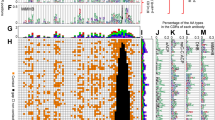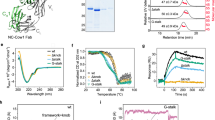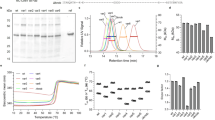Abstract
A detailed description of the interactions between an antibody and its epitope is necessary to allow an understanding of the way in which antibodies bind to antigenic surfaces presented by foreign molecules. Ideally this should be done by analysis of crystal structures of antibody–antigen complexes, but so far only two of these are available1,2. An alternative strategy3 combines molecular modelling4–6 with site-directed mutagenesis (SDM) and using this we have generated a preliminary model7 of the complex between Gloop2, an antibody raised against a peptide containing the 'loop' determinant of hen egg-white lysozyme (HEL) which also binds the native protein8, and its epitope on the protein surface. The main predictions from our model were; (1) that the surface of interaction between the antibody and the antigen is large (20 Å × 15 Å) and involves all the complementarity-determining regions (CDRs), (2) that electrostatic interactions were important in the formation of the complex, and (3) that conformational changes in either the loop or in the CDRs may occur during the formation of the complex. Here we report SDM studies which test some of these predictions; removal of two charged residues at the periphery of the combining site increases the affinity of the antibody for its antigen over 8-fold and decreases its ability to cross-react with closely-related antigens. This result is at variance with our original prediction but can be accommodated within our newly refined model; the role of electrostatics in antigen–antibody interactions is now questionable.
Similar content being viewed by others
Article PDF
Author information
Authors and Affiliations
Rights and permissions
About this article
Cite this article
Roberts, S., Cheetham, J. & Rees, A. Generation of an antibody with enhanced affinity and specificity for its antigen by protein engineering. Nature 328, 731–734 (1987). https://doi.org/10.1038/328731a0
Received:
Accepted:
Issue date:
DOI: https://doi.org/10.1038/328731a0
This article is cited by
-
Structure-based design and discovery of novel anti-tissue factor antibodies with cooperative double-point mutations, using interaction analysis
Scientific Reports (2020)
-
Bevacizumab Antibody Affinity Maturation to Improve Ovarian Cancer Immunotherapy: In Silico Approach
International Journal of Peptide Research and Therapeutics (2019)
-
The biotechnology and applications of antibody engineering
Molecular Biotechnology (1995)
-
New Techniques for the Production of Therapeutic Recombinant Human Monoclonal Antibodies
Clinical Immunotherapeutics (1995)



